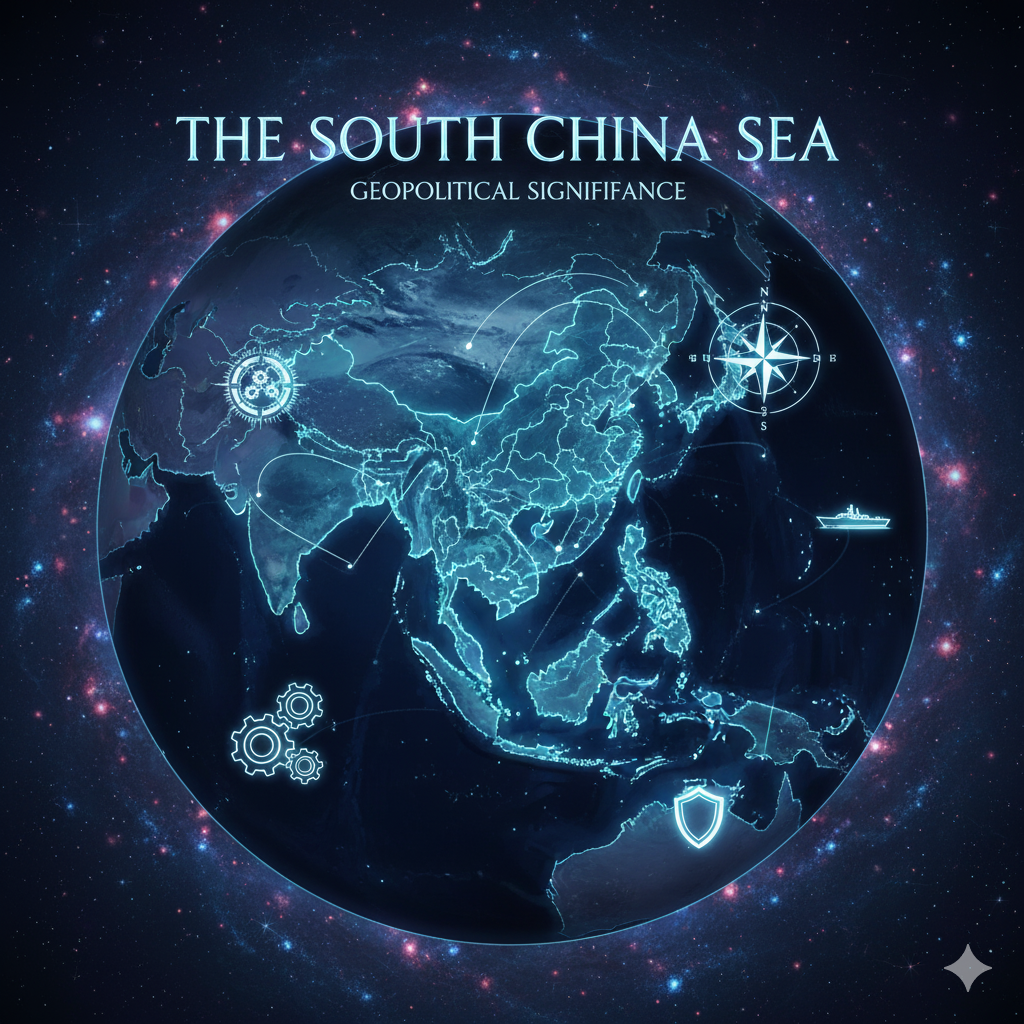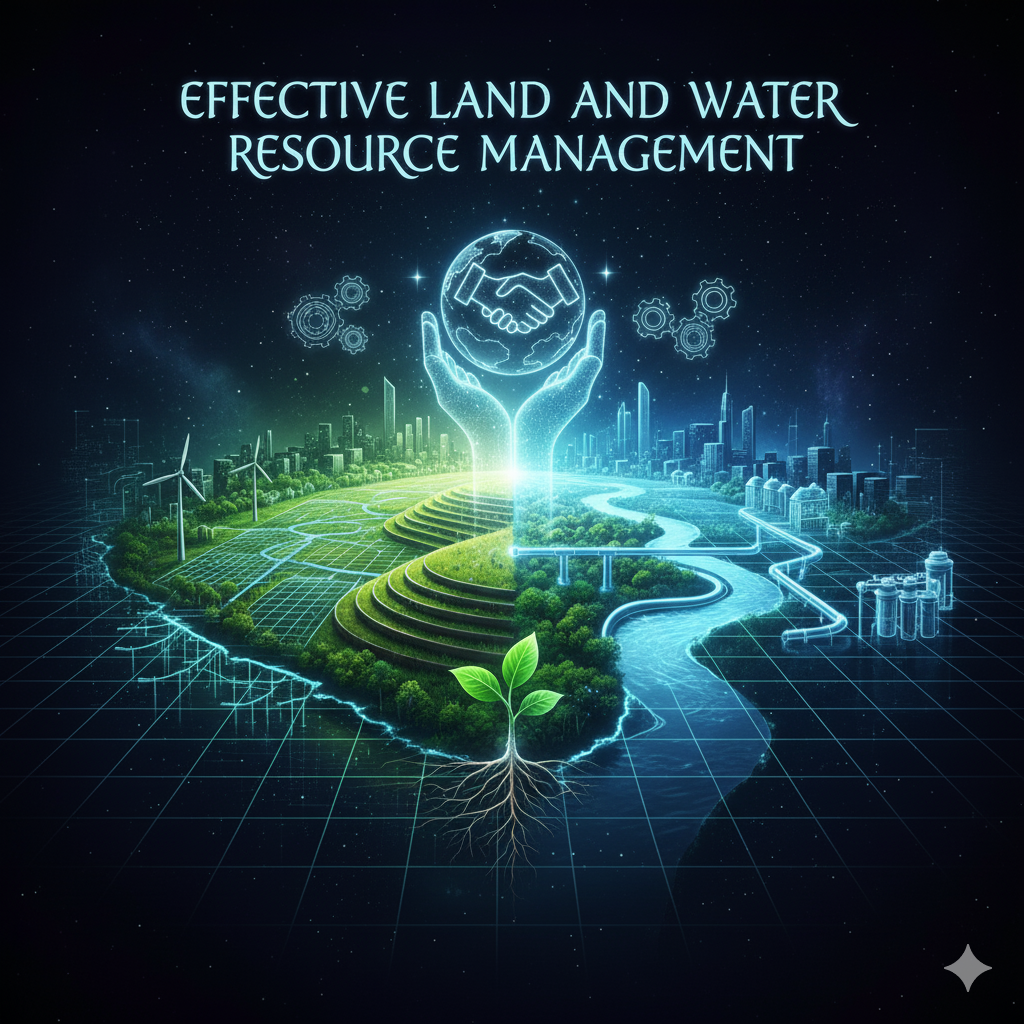Introduction
The South China Sea (SCS) has emerged as one of the most contested maritime regions in the world. Geographically situated at the crossroads of the Asia-Pacific, it stretches across an area of around 3.5 million square kilometers, bounded by China, Taiwan, the Philippines, Malaysia, Brunei, Indonesia, and Vietnam. Despite its relatively modest size compared to the world’s oceans, the South China Sea has assumed immense geopolitical, strategic, economic, and security importance in the present context.
The region is rich in natural resources, hosts vital sea lanes of communication, and is at the heart of competing territorial claims. It has become a flashpoint for great power rivalry, particularly between the United States and China, while also drawing in regional actors and international organizations. In the backdrop of intensifying disputes, military build-up, and global shifts towards Indo-Pacific strategies, the South China Sea is no longer just a regional maritime issue but a central theme in contemporary geopolitics.
Geographical and Strategic Overview
The South China Sea includes several key island groups, notably the Paracel Islands, the Spratly Islands, and Scarborough Shoal. These islands, reefs, and atolls are mostly uninhabitable but are of great strategic value. The sea connects the Pacific Ocean to the Indian Ocean through the Strait of Malacca, making it one of the busiest maritime transit corridors globally.
Key Features of the Region
- Sea Lanes of Communication (SLOCs): Nearly one-third of global maritime trade passes through the South China Sea.
- Natural Resources: The U.S. Energy Information Administration estimates around 11 billion barrels of oil and 190 trillion cubic feet of natural gas reserves.
- Fisheries: The sea is one of the richest fishing grounds, vital for regional food security.
- Geopolitical Crossroads: It lies at the intersection of East Asia, Southeast Asia, and South Asia, giving it immense geostrategic value.
Historical Context of Territorial Disputes
The roots of disputes in the South China Sea are deeply embedded in historical claims, colonial legacies, and nationalistic narratives.
- China’s “Nine-Dash Line”: First introduced in 1947, this line encompasses nearly 90% of the South China Sea, claimed by China and Taiwan. It overlaps with the Exclusive Economic Zones (EEZs) of Vietnam, the Philippines, Malaysia, and Brunei, creating conflicting claims.
- UNCLOS (United Nations Convention on the Law of the Sea): Provides a legal framework for EEZs up to 200 nautical miles. However, China’s expansive claims are inconsistent with UNCLOS provisions.
- Hague Tribunal Ruling (2016): In a case filed by the Philippines, the Permanent Court of Arbitration ruled against China’s nine-dash line claim. China, however, rejected the ruling outright.
These unresolved disputes form the backdrop of geopolitical tension in the region.
Geopolitical Significance of the South China Sea
1. Strategic Maritime Trade Routes
- Over $3 trillion worth of global trade passes through the South China Sea annually.
- The Strait of Malacca, a narrow chokepoint connecting the South China Sea to the Indian Ocean, is particularly vital for China, Japan, and South Korea, which are heavily dependent on energy imports.
- Control over the South China Sea implies strategic dominance over global trade flows, making it a linchpin of maritime power.
2. Military and Strategic Control
- China has built artificial islands and militarized reefs in the Spratly and Paracel Islands, deploying airstrips, radar systems, and missile defenses.
- The region serves as a forward defense line for China, allowing it to project power deep into Southeast Asia and the Pacific.
- For the U.S., maintaining freedom of navigation in the South China Sea is crucial to its Indo-Pacific strategy and alliance commitments.
3. Energy Security
- The potential oil and gas reserves in the South China Sea are a major driver of competition.
- For energy-hungry economies like China, Vietnam, and the Philippines, access to these resources is critical for future energy security.
- Securing maritime energy transport routes is equally significant, as disruption could destabilize regional economies.
4. Regional Food Security
- The South China Sea accounts for around 12% of the global fish catch.
- Millions of people in littoral states depend on its fisheries for livelihood and nutrition.
- Overfishing, environmental degradation, and militarized disputes threaten this crucial food source.
5. Symbol of National Sovereignty and Prestige
- For China, asserting sovereignty in the South China Sea is tied to its national rejuvenation narrative and resistance against perceived Western encirclement.
- For Southeast Asian nations, defending maritime claims reflects sovereignty and national pride.
- The disputes have thus become symbols of domestic politics, not just foreign policy.
Economic Implications
- Trade Flows: Any instability in the South China Sea could disrupt global supply chains, particularly affecting energy imports to East Asia and manufactured goods exports worldwide.
- Investment Climate: Ongoing disputes deter investment in offshore exploration projects, limiting economic potential.
- Infrastructure Development: China’s Belt and Road Initiative (BRI) and Maritime Silk Road emphasize securing the South China Sea as a corridor of connectivity, enhancing its economic centrality.
- Regional Economic Organizations: ASEAN countries are directly impacted, and instability undermines efforts at economic integration within the region.
Political and Security Dimensions
1. U.S.–China Rivalry
The South China Sea is the epicenter of the great power competition between the U.S. and China.
- The U.S. conducts Freedom of Navigation Operations (FONOPs) to challenge China’s maritime claims.
- China views these as provocations and evidence of U.S. containment.
- This rivalry has transformed the SCS into a frontline of global power politics.
2. ASEAN and Regional Politics
- ASEAN has struggled to adopt a unified stance, as members have differing stakes and alignments.
- While Vietnam and the Philippines are vocal against China, others like Cambodia and Laos tilt towards Beijing due to economic dependence.
3. International Law and Multilateralism
- The Hague ruling highlighted the role of international law in conflict resolution, but China’s rejection demonstrated the limits of legal mechanisms without enforcement.
- The SCS disputes expose weaknesses in global governance institutions when confronted by powerful states.
4. Security Dilemma in Asia
- China’s militarization provokes counter-balancing by the U.S., Japan, India, and Australia under initiatives like the Quad (Quadrilateral Security Dialogue).
- This raises risks of accidental conflict or escalation.
Ecological and Environmental Dimensions
The scramble for dominance in the South China Sea has ecological consequences:
- Destruction of Coral Reefs: China’s island-building activities have destroyed vast coral ecosystems.
- Overfishing: Competition for resources has led to unsustainable exploitation, endangering fish stocks.
- Marine Pollution: Increased military and commercial traffic adds to marine pollution.
- Climate Change: Rising sea levels and extreme weather events could worsen vulnerabilities in already contested areas.
The South China Sea in the Indo-Pacific Strategy
The Indo-Pacific has emerged as the new strategic geography for global powers, with the South China Sea at its core.
- India’s Role: India emphasizes freedom of navigation and supports ASEAN centrality while deepening security ties with Vietnam and the Philippines.
- Japan and Australia: Both are deeply concerned about Chinese assertiveness and align with the U.S. in defending open sea lanes.
- European Union: Increasingly involved, highlighting the global dimension of the dispute.
Challenges to Stability
- Overlapping Territorial Claims: The lack of consensus among littoral states perpetuates disputes.
- China’s Assertiveness: Its rejection of international rulings and military expansion undermine diplomatic solutions.
- U.S.–China Competition: Risks transforming the South China Sea into a battlefield for hegemony.
- ASEAN Divisions: Weak institutional mechanisms prevent collective action.
- Environmental Degradation: Resource scarcity may heighten conflicts in the future.
Prospects for Cooperation and Resolution
- Code of Conduct (CoC): ASEAN and China have been negotiating a CoC for the South China Sea, though progress is slow.
- Joint Development Agreements: Shared exploration and revenue-sharing could ease tensions, as seen in earlier China–Philippines initiatives.
- Confidence-Building Measures: Hotlines, joint patrols, and maritime dialogues may reduce accidental clashes.
- Role of International Institutions: The UN, World Bank, and regional organizations could facilitate dispute resolution and resource management.
- Sustainable Management: Prioritizing ecological preservation through collaborative frameworks could provide a non-political avenue for cooperation.
Conclusion
The South China Sea epitomizes the complexities of modern geopolitics. It is simultaneously a trade hub, a resource center, a theater of great power rivalry, and an ecological hotspot. Its significance extends far beyond its waters, influencing global trade, energy security, international law, and strategic balances in the 21st century.
While the disputes are rooted in historical claims, their present-day importance lies in the geopolitical contest between rising China and the established U.S.-led order, with regional states caught in between. The future of the South China Sea will largely determine whether the Indo-Pacific evolves as a region of cooperation or confrontation.
For stability, the challenge lies in shifting the focus from zero-sum competition to cooperative security, sustainable development, and shared prosperity. Only through multilateral engagement, respect for international law, and ecological consciousness can the South China Sea become a zone of peace rather than conflict in the decades to come.




